Related Research Articles

John Philip Sousa was an American composer and conductor of the late Romantic era known primarily for American military marches. He is known as "The March King" or the "American March King", to distinguish him from his British counterpart Kenneth J. Alford. Among his best-known marches are "The Stars and Stripes Forever", "Semper Fidelis", "The Liberty Bell", "The Thunderer", and "The Washington Post".
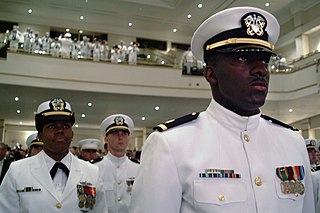
The Reserve Officers' Training Corps is a group of college- and university-based officer-training programs for training commissioned officers of the United States Armed Forces.

Mark Steven Kirk is a retired American politician and attorney who served as a United States senator from Illinois from 2010 to 2017, and as the United States representative for Illinois's 10th congressional district from 2001 to 2010. A member of the Republican Party, Kirk describes himself as socially liberal and fiscally conservative.

Jacob Zeilin was the United States Marine Corps' first non-brevet flag officer. He served as the seventh commandant of the United States Marine Corps, from 1864 to 1876.

John Archer Lejeune – pronounced "Luh-jern" – was a scholar, Freemason, United States Marine Corps lieutenant general and the 13th Commandant of the Marine Corps. Lejeune served for nearly 40 years in the military, and commanded the U.S. Army's 2nd Division during World War I. After his retirement from the Marine Corps he became superintendent of the Virginia Military Institute.
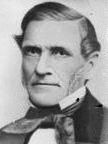
James Hutchinson Woodworth, was a member of the Illinois State Senate and the Illinois State House of Representatives, served as a Chicago Alderman, was elected to consecutive terms as Mayor of Chicago, Illinois (1848–1850) as an Independent Democrat, and served one term in the US House of Representatives as a member of the Republican Party. Woodworth completed his career in Chicago as one of the city's most noteworthy bankers. He is a member of the Woodworth political family.

George Barnett was the 12th Commandant of the United States Marine Corps. He was a pioneer of amphibious warfare and the U.S. Marine Commandant during American involvement in World War I.

Wilbur Bestwick was a United States Marine who served as the first Sergeant Major of the Marine Corps from 1957 to 1959.
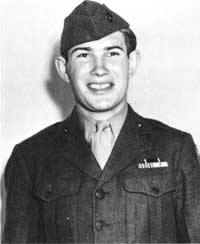
Richard Keith Sorenson was a United States Marine who, as a private, received the Medal of Honor during World War II for his heroism during the Marine landing on Kwajalein Atoll on the night of February 1–2, 1944. He threw himself on an exploding Japanese grenade that was part of US munitions captured during the Battle of Bataan, to save the lives of five fellow Marines. Although fragments of the grenade ripped through his thighs, hips, right arm and right leg, he survived the action. Of the 27 Marines who similarly threw themselves on grenades to save the lives of their fellow Marines during World War II, Sorenson was one of only four who lived. Fellow Medal of Honor recipients Richard E. Bush, Jacklyn H. Lucas and Carlton R. Rouh were the other three survivors.

Thomas Edwin Greenfield Ransom was a surveyor, civil engineer, real estate speculator, and a general in the Union Army during the American Civil War.
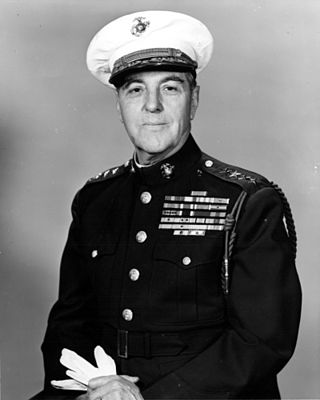
Gerald Carthrae Thomas was a United States Marine Corps general who served as Assistant Commandant of the Marine Corps. He retired from the Marine Corps in 1956 with more than 38 years of distinguished service which included duty on four continents, spanning two World Wars, Haiti and the Korean War. During World War I, he fought in major offensives, including the Battle of Belleau Wood, and was awarded the Silver Star and the Purple Heart.
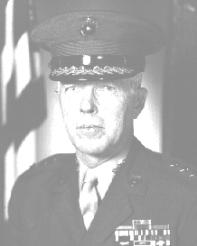
Herbert L. Beckington was a United States Marine Corps lieutenant general who served in combat during World War II and the Vietnam War. He later served as the first inspector general for the United States Agency for International Development.
Hugh Charles McBarron Jr. (1902–1992) was an American commercial artist. Known for his wide body of work featuring the United States Armed Forces, he is considered by many to have been the "dean of military illustrators."
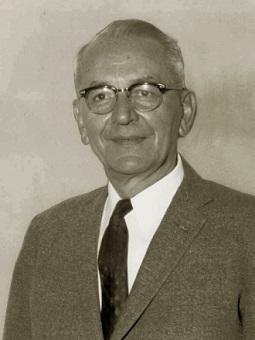
John Slezak was United States Under Secretary of the Army from 1954 to 1955.

Ralph Austin Bard was a Chicago financier who served as Assistant Secretary of the Navy, 1941–1944, and as Under Secretary, 1944–1945. He is noted for a memorandum he wrote to Secretary of War Henry L. Stimson in 1945 urging that Japan be given a warning before the use of the atomic bomb on a strategic city. He was "the only person known to have formally dissented from the use of the atomic bomb without advance warning."
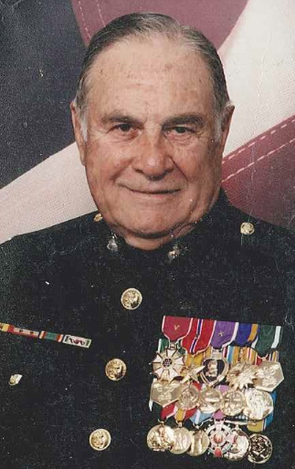
Gerald F. Russell was a Marine who served in World War II, including missions to Iwo Jima and Guadalcanal. He commanded one of the first units to land in Japan and provided protection for the US technical teams covering the atomic bomb site in Nagaskai. Russell also witnessed the historical raising of the American flag on Mount Suribachi in Iwo Jima.

Richard Hall Jeschke was a decorated officer of the United States Marine Corps with the rank of brigadier general, who commanded 8th Marine Regiment during the Battle of Guadalcanal. He later served in the European Theater and participated in the planning of the Invasion of Normandy and the Invasion of Sicily.
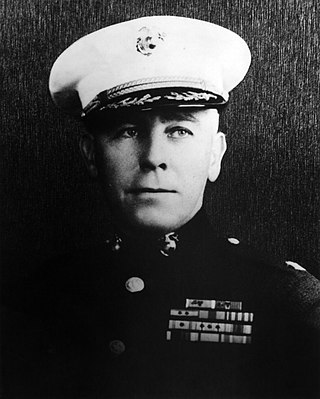
Richard Potts Ross Jr. was a highly decorated officer of the United States Marine Corps with the rank of brigadier general. He is most noted for his service with the 1st Marine Division during the Battle of Okinawa and later during the Occupation of North China.

Emile Phillips Moses was a distinguished officer in the United States Marine Corps with the rank of major general. A veteran of forty years of service and several expeditionary campaigns, Moses is most noted for his service as commanding general, Marine Corps Recruit Depot Parris Island during World War II and for his efforts in the developing of Marine Corps Amphibious Warfare doctrine, especially Landing Vehicle Tracked.
References
- LaSalle Bank. The Business advantage – from LaSalle National Bank. Chicago, 1992.
- Obituary of Clayton Marks. Chicago Sun-Times. March 6, 1957. p. 31